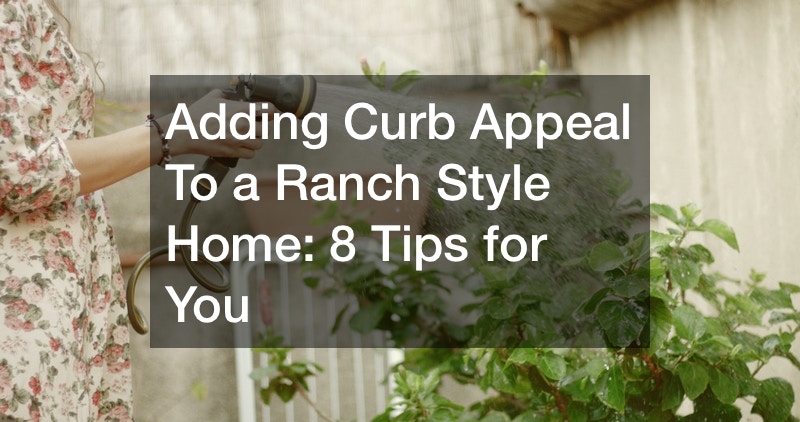Disclaimer: Charms Ville. This site provides fashion and lifestyle content for informational purposes only.
As the discussion around climatic change gets intense, many Americans appreciate the need to explore alternatives to traditional ways of building. At the moment, homes account for about 40% of the US energy consumption. The massive energy consumption is a call for concern. Luckily, going green can help burn fewer fossil fuels and reduce greenhouse gases.
Environmentally friendly homes are proving a viable solution to cutting energy consumption and preserving the environment. For this reason, many Americans are developing or searching for energy-efficient homes. According to realtors, energy-efficient-rated homes are 102.7% more likely to sell than unrated homes. However, building an energy-efficient home on a budget is not easy. So, you need a clear-cut plan if you’re looking to build or buy on a tight budget.
This article explains how you can build an energy-efficient home on a budget. For instance, you can bring in a roofing contractor to replace your roof with designs and materials that support going green. This can also be done through a roof inspection. Similarly, a plumbing contractor can help you explore greener solutions for your HVAC system. Be sure to read till the end.
Benefits of Building An Energy-Efficient Home on a Budget
Before you get the practical tips, it is essential to get the rationale for building an energy-efficient home on a budget. Once you have the benefits of going green in mind, it’ll be easier to bring in a patio contractor to discuss how best you can build your green home. Also, you’ll be ready to get the best roofing supplies for your housing project. Keep going.
1. Lower Energy Bills
You will start noticing lower utility bills a few months into building an energy-efficient home on a budget. The drastic changes in your heating, cooling, and lighting mean you’ll make fewer utility payments.
To be specific, smart thermostats and energy-saving light bulbs will save you money. However, such products have high upfront costs. Not to worry, though, because your tight budget will get you something viable.
2. Environmental Safety and Protection
Going green is all about environmental safety and protection. Having an energy-efficient home means you’ll burn fewer fossil fuels. You’ll have played your part in combating climate change and promoting healthy habitats.
3. Improved Comfort
When building an energy-efficient home on a budget, go for improved insulation and ventilation. Such tweaks will improve the quality of your home, which in turn makes you comfortable. For example, ceiling fans (instead of AC) will make your rooms cooler. An on-demand heater, for instance, will save energy, and you won’t have to worry about a spike in the bill.
4. Less Water Usage and More Hydro-Savings
Some energy-efficient installations will help you save water. For example, low-flow faucets, green dishwashers, and toilets control water usage. That should help maintain water consumption at an optimum level: not too high or too low.
5. Improved Resale Value
As earlier-mentioned, energy-efficient-rated homes sell better. They have structures, systems, and appliances that appeal to buyers. Therefore, constructing an energy-efficient home on a budget is a prudent move if you plan to resell it. With a good realtor, you can easily get more than you spent building it. The return on investment is surprisingly high.
Now, the tips.
Tips for Building an Energy-Efficient Home on a Budget
You don’t need to break the bank to go green. There are plenty of readily-available options to put up your green home. In this section, you will learn tactics to help you save upfront costs and even more in the long term. Read on to explore this in-depth guide.
1. Use Recyclable and Renewable Materials

Concrete companies use almost two billion joules of energy to create one square meter of concrete. Most of that energy comes from oil, and burning it increases carbon emissions. If you don’t want to use fossil-fuel-based traditional building materials, consider using recyclable and renewable materials.
Existing materials like bricks, tiles, and other masonry items reclaimed from demolished buildings are best. That’s because they have little to no carbon footprint. Instead of asking a concrete company to get new cranes, use reusable materials. That’ll save you a lot of upfront costs. Here are examples of recycled and renewable building materials that you can explore:
- Roofing shingles made from recycled asphalt and old car tires
- Kitchen countertops made from special, cheap, and recycled glass
- Reclaimed wood, which mostly comes from train tracks, bridges, and old felled logs
- Instead of steel building contracting, go for rebars made using scrap metal
Consider getting your materials from within your area. That’s because locally-sourced materials require less transport to the site, meaning they are more energy efficient. Stone, bricks, wood, or ceramics from your local area can significantly lower the construction cost. You’ll spend significantly less than you would if you brought materials from another state.
2. Consider Geothermal Solutions for Heating and Cooling
Since you want to save cash, consider using geothermal heating and cooling. Geothermal is an impressive type of renewable energy that taps into the sun’s energy. That energy is then absorbed into the ground.
Essentially, geothermal systems store energy nearby until you need it. The systems usually have a network of pipes laid four to six feet underground. At that depth, temperatures are usually consistent all year long, sitting at around 50 degrees Fahrentint.
The pipes in the systems are usually full of water and antifreeze. The latter circulates between the ground and the house, absorbing any heat from the earth and using it to warm your home. With some systems, the heat can connect to your water system and faucets to generate hot water. When summer comes, the systems usually work the opposite. They pick heat from your home and carry it into the cooler underground. Stored energy comes in handy during the winter times.
In terms of structure, geothermal systems can either be open- or closed-loop. Open loop systems allow heat to move from the underground and then discharge it. Closed loop systems, which are functionally the best, use the same liquid (antifreeze). The liquid travels throughout the system in a continuous loop.
Tapping geothermal energy may have a relatively high upfront cost, but you’ll save massively in the long term. With your tight budget, explore an affordable geothermal system, and, in the long run, you will enjoy free cooling and heating. After getting recyclable materials and a renewable energy source, decent insulation should be next.
3. Go for Solar or Wind Energy
Building an energy-efficient home on a budget is incomplete without factoring in solar and wind energy. They are the most popular renewable energy sources because you can create them independently.
Building a wind-powered system or a framework of solar panels is quite affordable. That’s because the many available providers have flooded the market, keeping the prices competitive. This is good news for you! Get yourself a service provider who can install your renewable energy source at an affordable cost. For example, your roofing installation company can add solar panels to your recycled shingles.
It’s easier to start with solar energy, especially if you live where summers are hot. As the cheapest form of electricity, solar will light your home efficiently, and you will help save the planet.
When building an energy-efficient home on a budget, let your wind or solar panel be a DIY job. With the right knowledge and guidance, you can buy photovoltaic panels at a cheap price and build your solar-powered system.
4. Choose a Decent Type of Insulation

Anyone exploring green homes will require the right insulation. Insulation helps buildings become more energy efficient, which is something you want for your home. An excellent insulation choice will ensure that your house doesn’t suffer the effects of temperature fluctuations. Ultimately, your green home will have the right amount of heat and cold inside and outside.
Avoid conventional forms of insulation because they use plastics such as polystyrene and fiberglass made using fossil fuels. Instead of such insulation options, go for eco-friendly options. They will provide good quality and sufficient insulation for your floors, walls, and ceilings. Here are some of the non-fossil-fuel options to consider:
- Cellulose – this material usually contains recycled products, mostly newspapers. Cellulose offers more insulation efficiency than traditional options. It also contains borate, a non-toxic chemical that repels rodents and insects. That makes it the best insulation material for a person living in a highly-infested area.
- Cork – cork is naturally found in trees, and many manufacturers harvest it sustainably. It is then manufactured in a carbon-negative process and offers equal or better insulation than fiberglass and polystyrene. The benefits of cork are that it lasts long and it is fire-resistant. That should be ideal if you live in areas down South where fires occur frequently.
- Sheep’s wool – if you’re looking for an insulation material that is 100% natural, look no further than sheep’s wool. It is recyclable and renewable and is one of the best biodegradable forms of insulation. Apart from regulating temperatures in your green home, it stores humidity. When the humidity level in your house falls, the insulation releases moisture in drops. Besides, it absorbs harmful chemicals and, in that way, becomes an air filter.
If you explore the green insulation options mentioned above, you will slash your energy bills. Building an energy-efficient home on a budget requires every green alternative, and insulation is one of them. The good thing is that the options given are free from toxins, unlike traditional insulation materials. Choosing sheep’s wool or cellulose will save you from chemicals like formaldehyde that could harm your family’s health.
5. Pick an Earthship or a Prefab for an Energy Home
Lastly, consider going for two of the easiest ways of building an energy-efficient home. Earthships and prefab homes are eco-friendly buildings that will check your boxes.
An Earthship is a specific type of house that incorporates sustainability in every aspect. From design to construction, an Earthship uses strategies that make life as green as possible. For example, an Earthship can have solar panels as roofing. Also, it may have windows in an ideal position to take in the sun’s radiation.
Earthships also take advantage of the earth’s natural thermal energy apart from solar panel arrangements. They have dense walls built using high-mass materials, making them extremely energy efficient. The homes keep the internal temp stable, and they absorb and radiate energy to the house depending on the season. Also, Earthship homes use sustainable insulation to keep the energy bill low. This home may work for your budget because it is highly customizable.
Apart from Earthship homes, you can get a prefab, which is short for prefabricated. These homes are partly prebuilt; factories produce them on a large scale with all eco-solutions incorporated. Then, at your request, the structure gets to your location quickly, together with all the components. All the activity around a prefab home makes it more efficient to transport and construct. Also, the building process is more energy-efficient, and the cost will be well within your budget.
Conclusion
You now know how to build an energy-efficient home on a budget. From the roof inspection to the structural integrity, you can switch to a house that makes the world healthier. Be sure to explore the options given and get all the help you can. Do more research on the viability of a green home in your state, then engage experts and service providers. In the long run, you will build a healthy habitat that will save you a lot on energy spending, regardless of how much it costs. Consider working with home building contractors who understand contemporary building designs. They’ll incorporate environmentally friendly and energy-efficient designs and materials in your home. You can rest assured of a cozier and fresher space.



